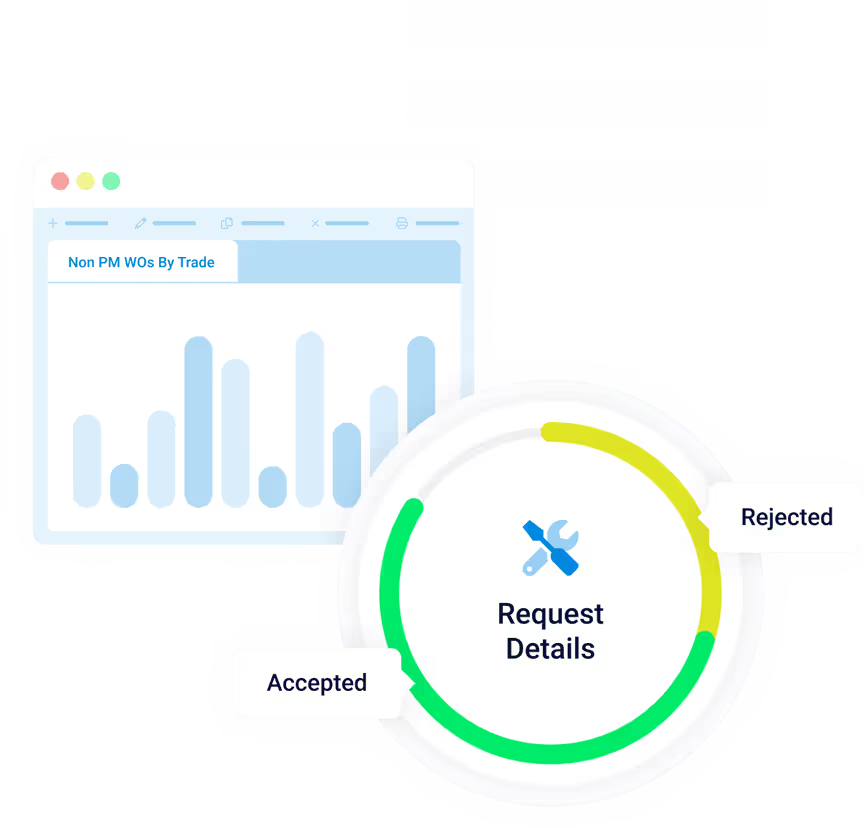
With more complex software and hardware systems and leaner teams, how can teams guarantee they are making the best decisions for their organizations? A consolidated, flexible EAM platform is a great place to start.
With the rise of Industry 4.0 and technological growth across industries, Enterprise Asset Management (EAM) software has evolved. EAM solutions have matured from a simple, singular maintenance management resource to an integrated enterprise-wide asset management platform.
The Enterprise Asset Management market is slated to continue exponential growth, nearly doubling its Compound Annual Growth Rate (CAGR) by 2028. The expansion of integrative intelligent technology and enhanced data visualization capabilities within EAM software has given facilities leaders more connectivity across their operations. In the current market of EAM offerings, there are four primary trends that are transforming asset management and driving growth in this industry.
Cloud-based Offerings
Many facilities leaders have invested in cloud-based applications to support their organizations. The ease of deployment and long-term cost savings appeal to Facility Directors who want to minimize lift from their internal resources and delegate to their team’s strengths. Not only does cloud-based software automatically update, relieving pressure on internal IT teams, but they have proven security – leveraging a large-scale investment in cybersecurity.
Data-centric Strategies
With the adoption of cloud-based platforms, facility executives have gained more visibility across their facilities and assets. This holistic vantage point has given rise to data collection and consolidation within the entire operational landscape. Now, all historical asset and maintenance data can be referenced when making important decisions. By tracking the entire asset lifecycle, enterprise leaders can aim to prevent budget losses and unplanned equipment downtime more accurately with EAM software.
Predictive Maintenance 2.0
The ease of gathering and analyzing large amounts of data solidified the move from reactive and preventive maintenance to a more proactive maintenance approach, Predictive Maintenance. Facilities managers plan for more intelligent, targeted maintenance with the use of sensors and real time equipment monitoring,
More recently, organizations have leveled up from this prescriptive approach to Predictive Maintenance 2.0. This is an aggregate of multiple strategies, including preventive maintenance, reliability-centered maintenance, and quality data collection through integrated technologies connecting systems, people and devices. Predictive Maintenance 2.0 leverages asset and equipment data to help users make the most cost-effective and future-focused decisions about assets.
“In the last two years — based on thousands of client interactions on EAM — we have seen a rising interest in predictive maintenance, AI and APM (Asset Performance Management).”
– 2024 Gartner Market Guide for Enterprise Asset Management Software
Emergence of Intelligent Technologies
The move to a proactive maintenance strategy incorporates the use of intelligent technologies like artificial intelligence and Internet of Things (IoT) to automate, track, schedule and report on the health and longevity of assets. Integrating EAM asset management software with these advanced technologies supports an organization’s bottom line by improving at-failure prediction for physical assets and uplifting internal resources with access to better data and the ability to automate processes.
.jpeg)
TMA Systems and is a trusted provider of EAM solutions for organizations across industries. With a commitment to modern engineering and the latest industry trends, TMA’s EAM software is flexible and user-friendly, leveraging advanced integrations and modern interfaces. Its product suite includes integrations with building automation platforms including Johnson Controls Open Blue Enterprise Manager and Honeywell Forge. Aligned with the newest iteration of predictive maintenance and offering cloud-based asset lifecycle tracking, TMA is a partner to facility leaders looking to improve the overall operational health of their organization.
Schedule a demo to learn more about how TMA’s products can improve your enterprise asset management processes by boosting productivity, reducing downtime and driving results.
GARTNER is a registered trademark and service mark of Gartner, Inc. and/or its affiliates in the U.S. and internationally and issued herein with permission. All rights reserved. Gartner does not endorse any vendor, product or service depicted in its research publications, and does not advise technology users to select only those vendors with the highest ratings or other designation. Gartner research publications consist of the opinions of Gartner’s research organization and should not be construed as statements of fact. Gartner disclaims all warranties, expressed or implied, with respect to this research, including any warranties of merchantability or fitness for a particular purpose.
Ready for a Demo?
Interested in taking this to the next level? Sign up for a free demo with a TMA Systems Account Executive. Enter your email below and we will reserve a time for you to test drive WebTMA.







